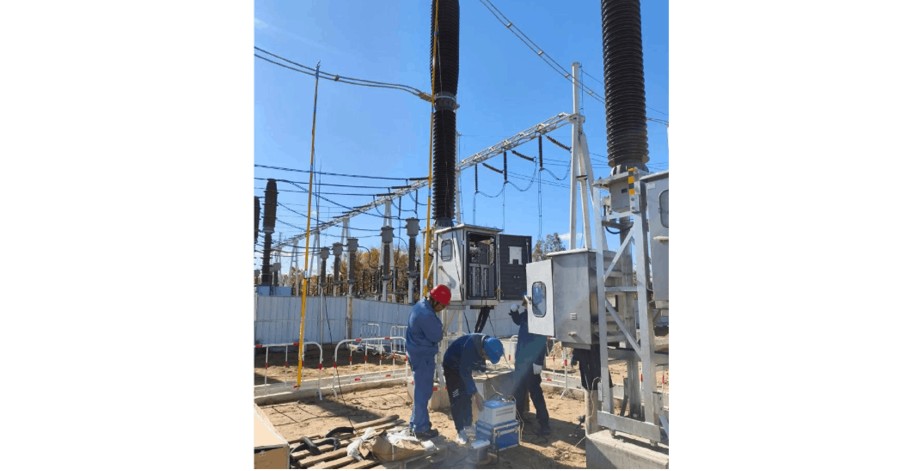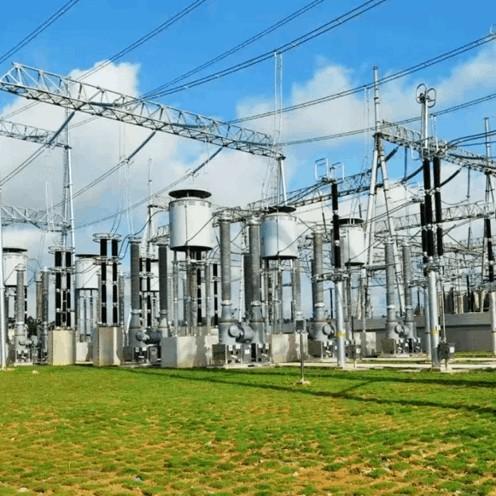1. Yfirlit yfir tegund handover prófaðar fyrir árvegismjólkur
1.1 NéCESSITY OF HANDOVER TEST
Handover prófið er mikilvæg skref til að tryggja afköst og örugga virkni árvegismjólka í raforkukerfi. Fyrir raforkukerfi með spenna á 220 kV eða lægri, spila árvegismjólkar aðalhlutverk í að vernda raforkuapparat við skemmdir sem orsakaðar eru af ofrspennu og þunderslagum. En í ferlinu frá því að árvegismjólkurinn fer út úr verksmiðju til að hann byrjar að vinna eftir uppsetningu, geta umhverfisþættir eða missun í hendingu, geymingu og uppsetningu hafa áhrif á hans virkni. Með handover prófi er hægt að greina framleiðsluofbæris, skemmdir í hendingu og uppsetningaratriði strax, til að tryggja að árvegismjólkurinn sé í bestu skilyrðum áður en hann hefst að vinna og undan komast villur á meðan hann er í vinnu, þannig að staðfestist öruggleiki og fasthet raforkuhornsins.
1.2 Aðalatriði handover prófs
Handover prófið er stefnt að tveimur aðalatriðum:
Próf á rafmagnsvirkni: Staðfestir hvort rafmagnseiginleikar árvegismjólka uppfylli hönnunar kröfur undir ákveðnum skilyrðum, til að tryggja að hann tryggir varn við ofrspennu og þunderslag. Raunveruleg prófunin fjallar um hluti eins og DC tengspenna (sem lýsir volt-ampere og ólínlínu eiginleikum), próf á lekandi straumi, síðan rafmagnsfreki tengspenna, lekandi straum við 0.75 sinnum DC tengspennu, virkni afsláttarteljara, eftirspenna, rafmagnsfrekistigi og ofrspennupróf, sem samantektarlega meta rafmagnsvirkni.
Próf á öskulind: Greinir öskustöðu árvegismjólka, til að finna faldraðar áhættur eins og skemmdir í ösku og ofrmikill lekandi straum í vinnu. Með mælingu á öskulind er staðfest hvort öskuvirkni uppfylli staðla, til að forðast kerfisatriði sem orsakað eru af öskufaldrum.
1.3 Staðlar og reglur handover prófs
Handover prófið verður að vera strengt samkvæmt innlends og alþjóðlegum staðlum og reglum til að tryggja rétt og treyst próf. Staðlar skilgreina klart prófamóði og tekniska kröfur fyrir rafmagnseiginleika og umhverfiseinkunn árvegismjólka. Samanbundið við raunverulegu skilyrði Kínas raforkukerfi, er fynnt við kröfur um prófagreinar, umhverfi og ferli, til að tryggja staðalsett prófforrit og treystni niðurstöðna. Á meðan próf er framkvæmt, ætti að nota greinar og tæki sem uppfylla nákvæmni kröfur, keypt af starfsferðarmönnum eftir staðlaga ferli. Sama tíma ætti að leggja áherslu á loftþrýsting, rak og rafmagnsmyrkvi til að afla nákvæð gögn sem mynda raunverulegt vinnumhiti.

2. Yfirlit yfir lifandi prófunartækni
2.1 MÝRDÓMUR LIFANDI PRÓFINGAR
Lifandi prófun er víðtæk notuð í raforkukerfi, með förmunum af ekki-intrusiveness og rauntíma yfirliti:
Undan komast tap vegna raforkubrot: Prófun er hægt að framkvæma án raforkubrots, til að tryggja samfelld raforku og minnka efnahags- og samfélagslegar áhrif.
Rauntíma yfirlit: Dynamically detects the insulation, conductivity, and thermal status of surge arresters without interfering with normal operation, promptly identifying potential fault hazards and facilitating planned maintenance, preventing large-scale power outages and equipment damage.
Heildarlífsgreining: Með prófun á rafmagnsvirkni og öskulind árvegismjólka, metað er heilsuástand hans, til að tryggja rétt virkni við þunderslag og ofrspennu. Með greiningu prófagagna er hægt að formúla áætlað viðhaldarstrategíur, lengja notkunargerið á tækinu og minnka villurisk, sem gefur grunn að viðhaldi á skilyrði og fyrirvarandi viðhaldi.
Auka intelligent raforkukerfi: Bæta vöxt á raforkuapparat, tryggja örugga framleiðslu og efnahagslega kosti raforkufyrirtækja, og auka intelligent og moderna stjórnunarskipanu raforkukerfa.
2.2 Teknikkprincip fyrir lifandi prófun
Teknikkprincip fyrir lifandi prófun er aðallega byggt á mörgum eðlisfræðilegum atburðum eins og rafmagnsþýði, hitafræði og hljóðfræði. Með mælingu og greiningu á parametrar eins og rafmagnsþýði, hitaþýði og hljóðþýði tækja í lifandi skilyrðum, dæmir um vinnumstaða og heilsuástand tækja.
Almennir aðferðir fyrir lifandi prófun innihalda:
Infraröðull prófun: Með infraröðull hitamyndatækni er mælt hitadreifing og hitaflæði yfir yfirborð tækis, til að greina óvenjulega háhitastaði, og greina villur eins og ofrhita, slæmar tengingar eða öskugammal.
Ultrasonic Detection: Capture ultrasonic signals generated inside and on the surface of the equipment to evaluate the insulation status of the equipment.
Impulse Voltage Detection: Measure the impulse voltage signals inside the equipment to determine the location and severity of insulation defects, and simultaneously analyze characteristics such as the signal intensity, frequency, and voltage waveform.
Basic principle of live testing can be summarized as:

In the formula, E(t) is the detected signal, A is the amplitude of the signal, φ is the angular frequency, ω is the phase angle, and (n(t) is the noise signal.
2.3 Implementation of Live Testing
When conducting live testing, select and configure equipment/instruments based on the test object type and operating environment, matching appropriate sensors and detectors. For surge arrester live testing, common tools include infrared thermal imagers, ultrasonic detectors, impulse voltage detectors, and live testers—these offer high sensitivity/resolution for accurate detection in complex electromagnetic environments.
Pre - test: Calibrate instruments to ensure measurement accuracy/stability.
During test: Scientifically arrange sensor positions/angles to fully cover key parts and collect accurate data, ensuring test reliability. Test personnel must strictly follow procedures, prioritize safety, and avoid errors/accidents from improper operations.
Post - test: Conduct in - depth data analysis, confirm/diagnose abnormal signals, and take targeted maintenance/repair measures to accurately determine equipment status and hidden faults.
3 Analysis of Technology Application Cases
3.1 Handover Test Case
For a 220 kV surge arrester handover test, technical personnel performed comprehensive tests (electrical performance, insulation resistance, etc.) on newly installed arresters.
Electrical performance test: DC reference voltage results showed electrical characteristics met standards (smooth volt - ampere curves, no abnormal fluctuations).
Insulation resistance test: Arresters exhibited good insulation (resistance within specified ranges).
Impulse voltage test: A high - sensitivity detector confirmed no obvious internal insulation abnormalities.
During power frequency/impulse voltage tests, arresters withstood rated voltages and operated normally. Stable post - installation operation verified test accuracy, ensuring safe commissioning. Technical personnel optimized processes based on experience, improving efficiency/accuracy.
3.2 Live Testing Case
During a substation live test, technical personnel performed infrared detection and impulse voltage tests on operating 220 kV arresters:
Infrared detection: A thermal imager detected a ~10 °C abnormal temperature rise at an upper position.
Impulse voltage test: Further detection revealed stronger impulse voltage signals at this position, indicating an insulation defect—subsequently confirmed by lower - than - normal insulation resistance.
Targeted repairs restored normal operation. This test timely eliminated hidden dangers, providing valuable experience for future equipment monitoring/maintenance.
3.3 Experience Summary and Recommendations
In the handover test of surge arresters, ensuring their electrical performance and insulation resistance meet the standards is the core prerequisite for reliable commissioning of the equipment. During actual operations, attention should be paid to the calibration and maintenance of test equipment. Regular maintenance ensures measurement accuracy and stability. Meanwhile, strengthen the analysis and management of detection data: establish equipment health records and build trend analysis models to realize real - time monitoring of equipment status and fault prediction. The test data of live tests in a certain substation are detailed in Table 1.

From Table 1, it can be seen that standardized live testing and timely maintenance are effective approaches to enhancing the operational reliability of equipment, ensuring the stable operation of the power system.
4. Conclusion
The handover test and live testing technologies for surge arresters below the 220 kV class are highly effective in ensuring the reliable operation of surge arresters. In the future, as detection technologies continue to innovate and develop, the intelligent management level of the power system will be further enhanced, thus providing a more solid technical guarantee for the safe and stable operation of the power grid.

























